
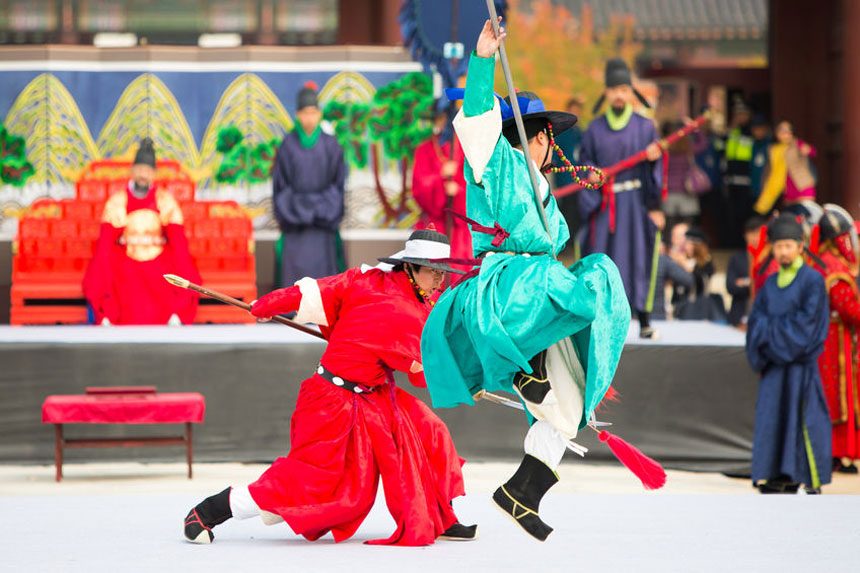 Image credit: filedimage
Image credit: filedimage Year after year, Seoul has grown in popularity among travelers thanks to the spreading of K-pop and K-drama. The invasion of Gangnam Style on our radios hurries us up to make a trip to the Land of the Morning Calm.
The most rewarding journeys often require us to immerse ourselves deep in the destination’s culture. If you are planning a trip to Seoul, make sure that you fill your bucket list with activities that touch all the quintessential aspects of the city.
Read on our article to get more ideas for your dream list.
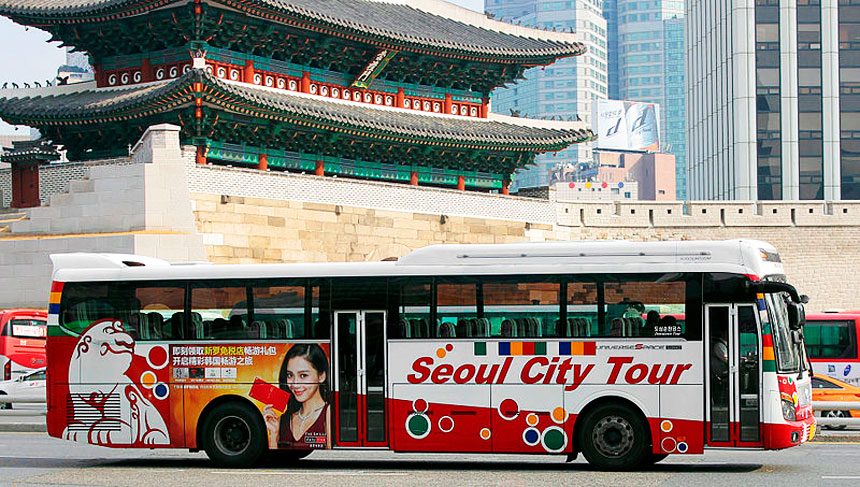 Image credit: Minseong Kim
Image credit: Minseong KimWhat
Seoul City Tour Bus is a government-run bus system that was launched in 2000 to help visitors get to know Seoul and its many attractions in a less time-consuming way.
The buses depart from the Gwanghwamun Station (Subway Line 5), Exit 6, near Koreana Hotel, every 30 minutes or 1 hour, depending on the routes. There are single-level and double-decker buses for visitors to choose from. These two different kinds of deck-marking buses follow different traveling paths. Ticket holders can get on and off at any stop along their routes.
Headphones are equipped in the buses for sightseers to listen to tour information in English, Korean, Japanese or Chinese. Day and night tours are available.
Why
One of the first things to do when arriving in a new destination is taking in the overall look of it. And these comfortable buses fulfil this need in the fastest and cheapest way. Go with them to get familiar to Seoul and reach many of the city’s main attractions with ease.
This service is perfect for those who do not have the luxury of time to cover a lot of Seoul’s must- sees at a more relaxing pace. Enjoy a whole day of sightseeing for a mere 12,000 won ($10.90) on single-decker or 15,000 won ($13.31) on double-deckers.
Highlights along the routes
The starting point Gwanghwamun Gate is the main gate of Gyeongbukgung Palace. You can stay and take pictures at this entirely made of concrete gate for free.
Deoksugung Palace is a historical complex located among modern buildings at Seoul’s busiest intersection. It was built during the Joseon Dynasty and officially became a palace in 1611. Enter the palace grounds through the Geumcheon Bridge, the same bridge where the king’s carriage passed each day in ancient times.
The National Museum of Korea is one of the largest museums in Asia. It houses Korea’s treasure in history, archaeology, and art. Go inside and see the precious pieces such as the Silla Gold Crown, the Pensive Bodhisattva statue, and the 12th century celadon incense burner.
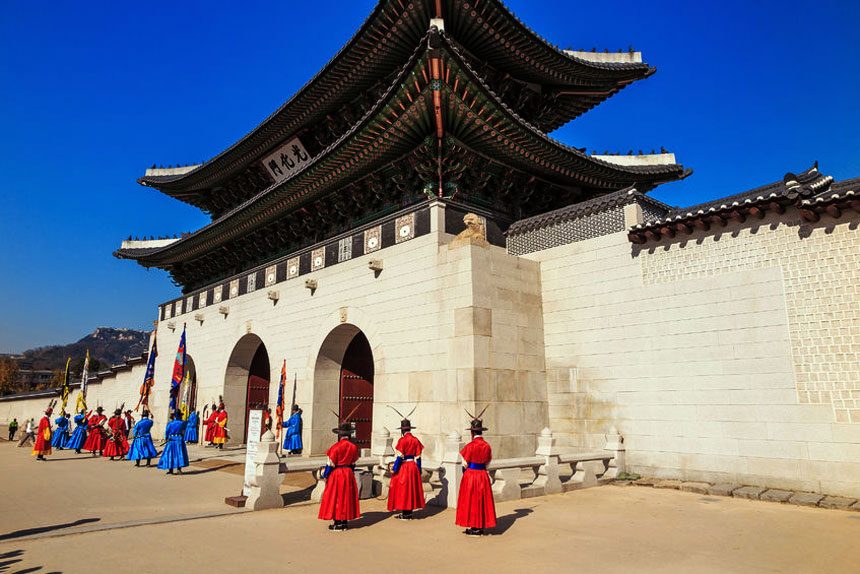 Image credit: f11photo
Image credit: f11photo What
Gyeongbokgung Palace is the first and main royal palace of the Joseon Dynasty. Its name means “palace greatly blessed by heaven”.
The palace was built in 1395 at an auspicious site according to geomancy. But it had to face many not-so-peaceful events in its own life. The palace was demolished several times and was left in ruins for centuries. Reconstruction efforts commenced in 1867, forming a huge complex with 330 buildings. It was again destroyed during the Japanese occupation in the early 20th century.
Restoration projects continue to this day in an attempt to completely reconstruct Gyeongbokgung Palace to its former status.
Why
Most locals and visitors would agree that Gyeongbokgung Palace is the most beautiful one among five grand palaces the city has to offer. People come to this royal place for its history and culture as well as the grandiose architecture. Free guided tours are available in English, Japanese, and Chinese.
Visiting the palace is like stepping into the set of a Korean historical drama. The experience is complete with locals wearing traditional costumes. Rent a hanbok (traditional Korean costume) and take a photo that looks straight out of history!
Most notable features of the Gyeongbokgung Palace
The changing of the Royal Guard is something really interesting to watch. It draws a lively picture in front of our eyes to tell us exactly how thing happened in the past. Each ceremony will have guards in royal costumes, celebrating shift changing with traditional weapons in hands and music by traditional instruments. You have chance to witness it twice a day at 10:00 and 14:00 (except on Tuedays).
Kyeonghoe-ru is one of the National Treasures of Korea. It is the country’s largest pavilion that is supported by 48 stone pillars. Kyonghoe means “joyful meeting” – an apt name for a spacious pavilion sitting on a lotus pond.
The National Folk Museum is the displaying place of over 4,000 historical artifacts that reflect the way of life of Korean people in the old days. The display gives visitors a close look into Korean agricultural lifestyles.
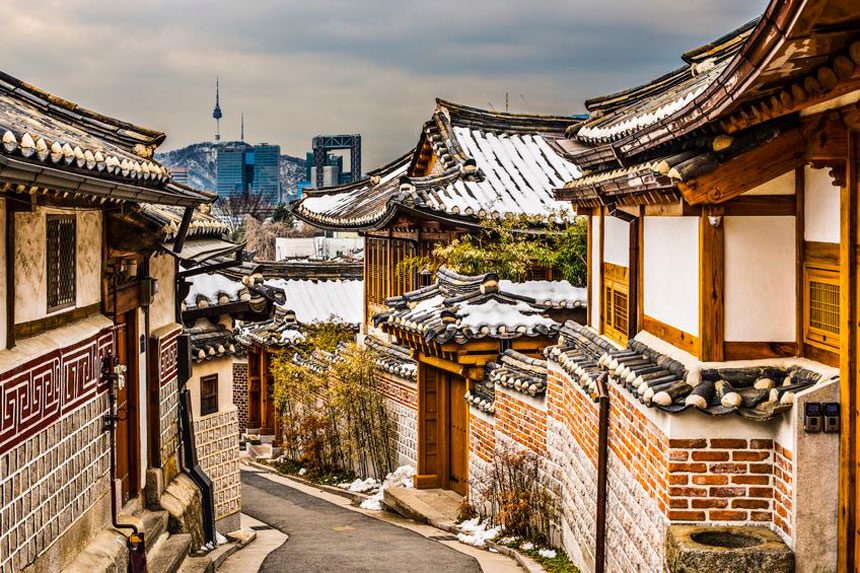 Image credit: sepavo
Image credit: sepavo What
Bukchon Hanok Village is an old village located in the heart of Seoul. This place attracts people with its myriad traditional houses dating back to the Joseon Dynasty, which are called hanok by the locals.
The village once was the residential quarter of nobles and high-ranking officials. This once-upon-a-time prestige living area is still home of Seoulites up to the present. Nowadays, there are hanok that serve as people’s homes; and there are hanok that live their lives as a restaurant, a café, a shop or a museum.
If you want to know how Bukchon Hanok Village positions itself in relation to royal places that it is connected with in some ways, then the answer is: It sits between Gyeongbokgung Palace and Changdeokgung Palace.
Why
Lounging at this long history village gives us the feeling of traveling back in time in a giant time machine. Yes, you have many other fellow travelers there with you to join this thrilling adventure.
It is a chance to step back in time and have a closer look into Seoul of the olden days. Just let yourself get lost in the narrow alleys long enough to soak up all the beautiful things of the hanok, which are uniquely built with tiled roofs and patterned walls.
Bukchon Hanok Village offers a stark contrast to the modern buildings that can be seen from a distance. Photo spots are marked for travelers who want to take the best pictures showing the old houses and the Seoul skyline in the background.
Complete the experience with a cup of coffee at a local café and watch people seeking their own doses of nostalgia.
Visitor information
Admission to the village is free while some museums and workshops in the village collect an entrance fee.
Free walking tours are available; they start at Unhyeongung Palace, Anguk Station.
Bukchon Hanok Village is a residential area so visitors are advised to keep the noise level as low as possible.
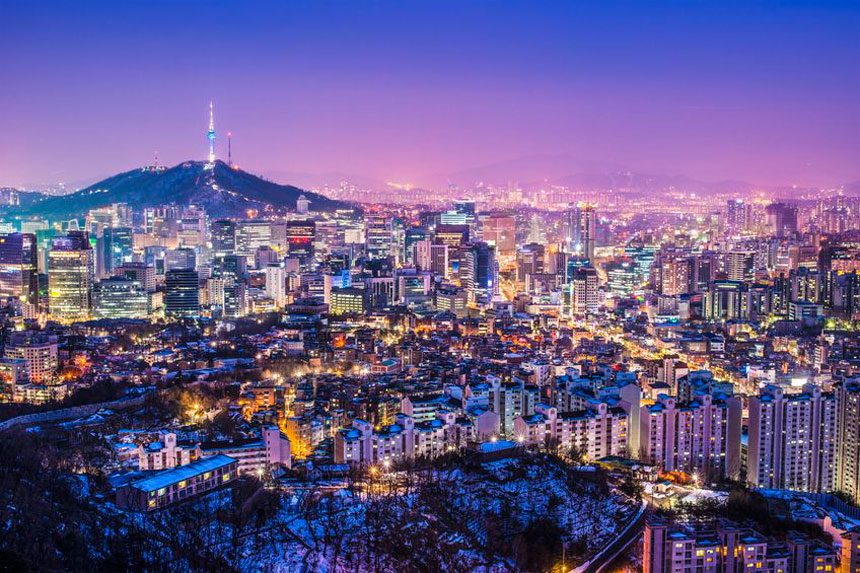 Image credit: sepavo
Image credit: sepavo What
N Seoul Tower, widely known as Namsan Seoul Tower, is a major landmark and tourist attraction in Seoul. It is situated on top of Namsan Mountain, at the height of 236.7 metres.
This tower is Korea’s first broadcast tower, transmitting radio and TV signals since 1972. It was opened to the public in 1980, allowing visitors to access the tower’s observation deck and other features.
The landmark was given its new name, N Seoul Tower, to reflect the new modernized look of it. After undergoing renovation, the tower now boasts a digital lighting system that can be redesigned to show lighting art for various events, holidays, and special occasions.
The N Seoul Tower is open the whole year and is accessible by cable car, bus, or private vehicle. The Seoul City Tour Bus also stops at the tower.
Why
No words can describe the breathtaking view of Seoul from the top of the tower. At this Seoul’s highest viewing point, we can enjoy a panoramic view of the city without any obstruction.
Start your thrilling experience from Namsan Orumi, a free outdoor elevator that takes you to the cable car station.
Spend some time at the romantic Roof Terrace and swear your undying love through “love locks” at the garden. It’s just like a scene from a Korean drama!
Must-do things at Namsan Seoul Tower
Get a 360-degree panorama of Seoul at the Digital Observatory on the third floor of the tower. Watch the LCD display to learn more about Seoul and Namsan Mountain.
Enjoy a romantic dinner at N Grill. This restaurant offers the amazing views of Seoul from any table you choose. Savor the French courses presented by Michelin-star chef, Duncan Robertson.
Learn the once hidden secrets of the broadcast tower at Seoul Tower Plaza. A media art exhibit is constantly on display and many cultural programs are available. Then take a leisurely walk along the walking trail at the terrace.
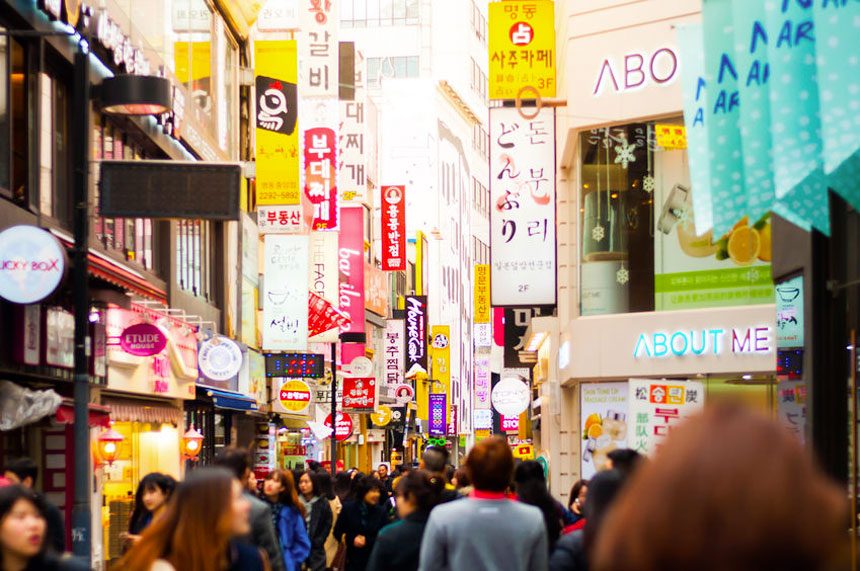 Image credit: coffeemate
Image credit: coffeemate What
Myeongdong is one of the main shopping districts in Seoul. This shopper drawer cares for every need of visitors. People are pleased with its beautiful mix of shopping providers, from department stores, modern malls, international retailers, factory outlets to small street boutiques.
The shopping district features trendy clothes, accessories, shoes, bags, and beauty products.
Among a wide variety of merchandise on offer, Korean cosmetics are the most sought after stuff. All time favorites and new creations are available at its thousands of cosmetic shops and skincare stores. Popular brands like The Face Shop, Missha, Nature Republic and Skin Food all join the show there.
Why
Myeongdong is a one-stop venue for shopping, dining, and entertainment. Mingle with the youthful crowd and absorb the energetic vibe of Seoul through its elegant fashion, delicious food and amusing music.
Myeongdong is the place to go for Korean beauty products, which are the same brands used by Korean stars. Locals would advise you to buy Korean cosmetics only at Myeongdong. The shops are generous with samples and they will give you more if you buy from them.
Non-residents who spend more than 30,000 won ($27.22) at eligible shops (shops displaying Tax-Free logos) can claim a tax refund for their purchases. This rule applies to the whole Korea.
Top things to do in Myeongdong
Of course, shopping is the main activity in Myeongdong. Splurge at designer shops like Louis Vuitton, Bulgari, Ralph Lauren, and Lacoste. Explore department stores such as Lotte, Shinsegae and Noon Square. Collect cosmetic samples at Korean beauty and skincare shops that line the two main streets of Myeongdong.
Gorge on street food! In Seoul, the best street food can be found in Myeongdong. Try out local fare like dried squid, fish cakes, and tteokbokki.
If you go in spring or autumn, you might chance upon the Myeongdong Festival. Get crazy in the flurry of activities with parades, music and dance performances.
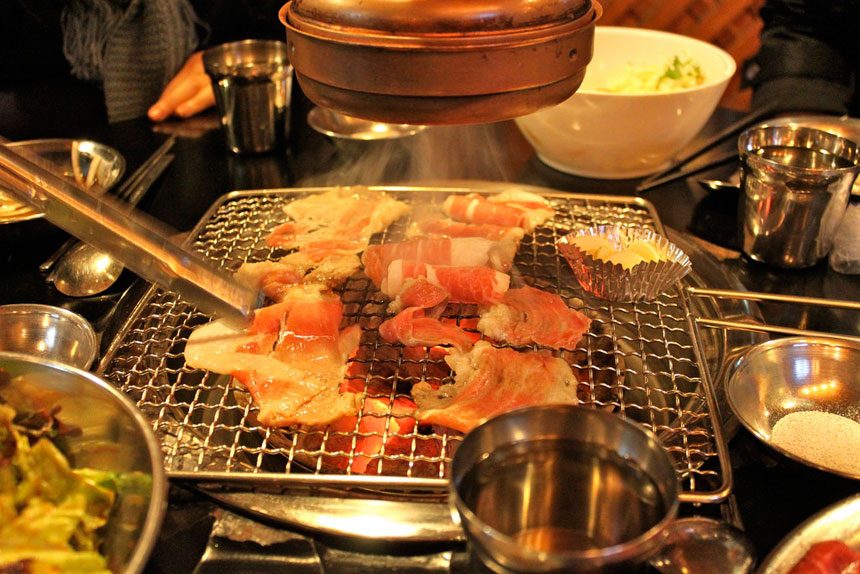 Image credit: Travis/Flickr
Image credit: Travis/FlickrWhat
Korean barbecue is the quintessential food of the country. A full Korean barbecue meal comprises of grilled meat, vegetables, and rice. Often, customers do the grilling right at their tables.
Meat is the jewel of the Korean grill party. Beef, pork, and chicken are usually included in the BBQ restaurants’ menus. They are either marinated or unmarinated. Bulgogi, which is beef favored with soy sauce, sugar, sesame oil, garlic, and pepper, is a foodies’ favorite among marinated proteins. Unmarinated meat often appears in very thinly-sliced cuts, resulting in perfectly cooked meat that smells good almost instantly upon hitting the grill or pan.
Korean barbecue restaurants, called gogi-jips or “meat houses”, can be found in almost every corner in Seoul. Most of them offers the same lip-smacking goodness.
Why
Nobody can resist the hypnotizing aroma while going past a barbecue restaurant in town. This heart-warming dish is now presenting its deliciousness in restaurants around the world, but the highest quality one can only be found in Seoul. So don’t miss out your chance while being in this barbecue capital.
Pick a gogi-jip and savor the most authentic Korean barbecue meal that you can ever enjoy. Even the locals always find various reasons to go to a meat house and devour loads and loads of beef and pork.
Best Korean barbecue restaurants in Seoul
Daedo Sikdang offers a no frills menu for a straightforward Korean barbecue experience. There are only three items on the menu so you won’t have a hard time choosing your food. Daedo Sikdang has expanded its business into many branches. For the best experience, stick to the original outlet at Seungdong-gu.
Saebyukjib is the most popular 24-hour Korean barbecue joint in Seoul. Saebyukjib means “House of Dawn” and true enough, the place is packed with customers even in the wee hours of dawn. Feeling adventurous? Try the yook-hwe (sashimi-style fresh raw beef)!
Maple Tree House is probably the most foreigner-friendly Korean barbecue restaurant in Seoul. The menu is in English so most travelers won’t have trouble reading or pronouncing the recipes. This 4-branch restaurant is very famous for its high quality meat.
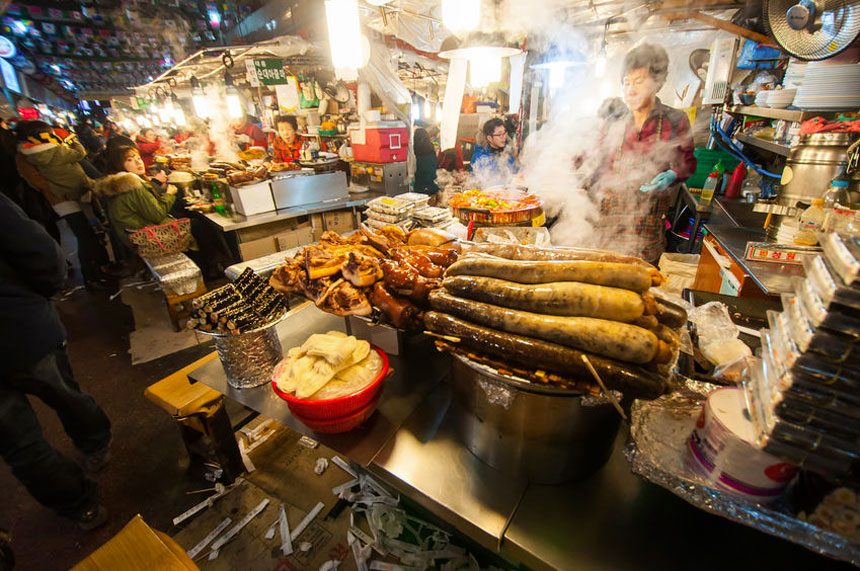 Image credit: coffeemate
Image credit: coffeemate What
Traditional markets are a true magnet attracting shopping and culture lovers. And there is no exception when it comes to these marketplaces in Seoul.
The city has 15 grand traditional markets to please its fans. Many locals still stick to their favorite markets and rely on them as trustworthy friends who have reasonably-priced products and good food.
Here is a list of merchandise that one can always find at Seoul markets: clothes, accessories, bags, shoes, houseware, kitchenware, fabrics, jewelry, toys, flowers, electronics, souvenirs and knick-knacks.
Why
Seoul traditional markets reflect the character of the city. It can be seen vividly in the ways people do the trading, the language, the product display, and the vibrant atmosphere. There is no better way to sip at the soul of Seoul than to taste its classic vibe at an old market.
Some of the markets in Seoul are older than the republic itself. Visit these history and culture narrators and get the most interesting stories about Seoul in the old days from them.
Appealing food and cheap merchandise are things that give the whole package a beautiful finish.
Best traditional markets in Seoul
Namdaemun Market is the largest traditional market in South Korea. It is easy to get lost amid its 10,000 shops and stalls. A wide range of products is available and Korean ginseng is one of them. The market is open 24 hours a day and wholesale shopping happens around midnight.
If you want to buy your own hanbok, come to Gwangjang Market. It is a textile and fabric market, but people usually visit it for another reason: Food. Find your way to the food stalls at the middle of the market and enjoy a genuine Korean market dining experience. Korean pancake, gimbap and bibimbap are the highlights of the show.
Dongdaemun Market is the place to go for Korean fashion. It is well known as a fashion hub that supplies clothes and fabrics to the whole city. Expect to have the most updated designs at reasonable prices there.
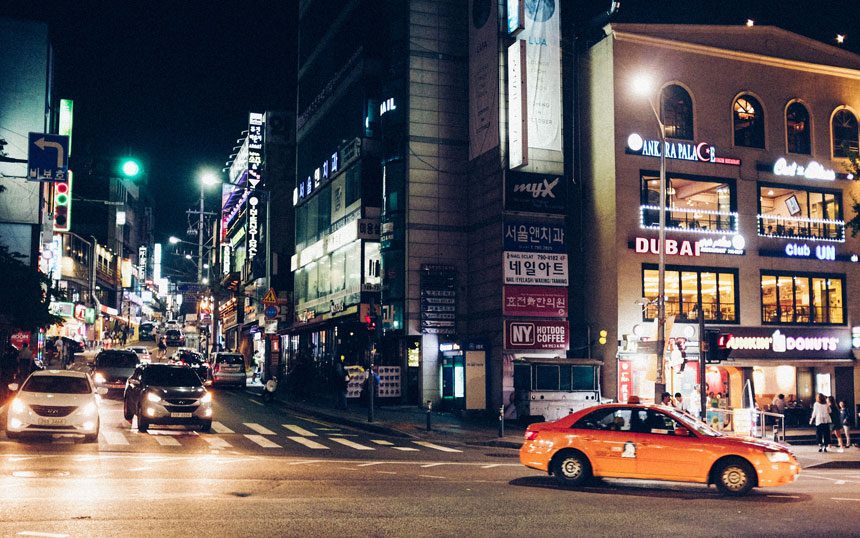 Image credit: Chang Jinyoung/Flickr
Image credit: Chang Jinyoung/FlickrWhat
Itaewon is often referred to as the Global Village of Seoul. You can find there a small society where many different cultures blend together.
After the Korean War, American troops stayed at the nearby Yongsan Garrison. Soon after, commercial and residential buildings began sprouting up in the area. The Korean government boosted construction and economic activities in preparation for the 1986 Asian Games and the 1988 Olympics. This prompted the influx of international visitors to Itaewon and its commercial development.
The street between Itaewon 1-dong and Hannam 2-dong hosts most of the actions in Itaewon. It stretches for 1.4 kilometres and is filled with retail shops, restaurants, and shopping stalls.
Why
Itaewon is where you can mingle with the international crowd. The place is most visited by travelers who have been away from home for long time and wish to be with kindred spirits. Join them at that melting pot if you want to meet fellow travelers from around the globe.
This little town also offers a great shopping and dining experience. Imported goods are sold in most of the shops there. The area’s diversity is also evident in a wide selection of international restaurants, bars and pubs.
Top things to do in Itaewon
Shop for international brands in over 1,000 stores there. Those can’t find clothes of your sizes in Korean stores can come to Itaewon where bigger clothing sizes are available to suit larger-framed foreigners.
Savor international cuisine. Walk towards the back of Hamilton Hotel to reach a culinary mecca where specialties from different countries are on offer. Travel the world through food by sampling dishes from Japan, China, Thailand, India, Australia, USA, Mexico, France, Italy, Greece, and many, many more. It’s like a world food expo!
Go bar hopping or pub crawling. Itaewon is known for its bustling nightlife. Some clubs hire famous DJs for all-night dance parties. You can also opt to gulp a bottle of beer at an outdoor pub and watch the flow of people in and out of Itaewon.
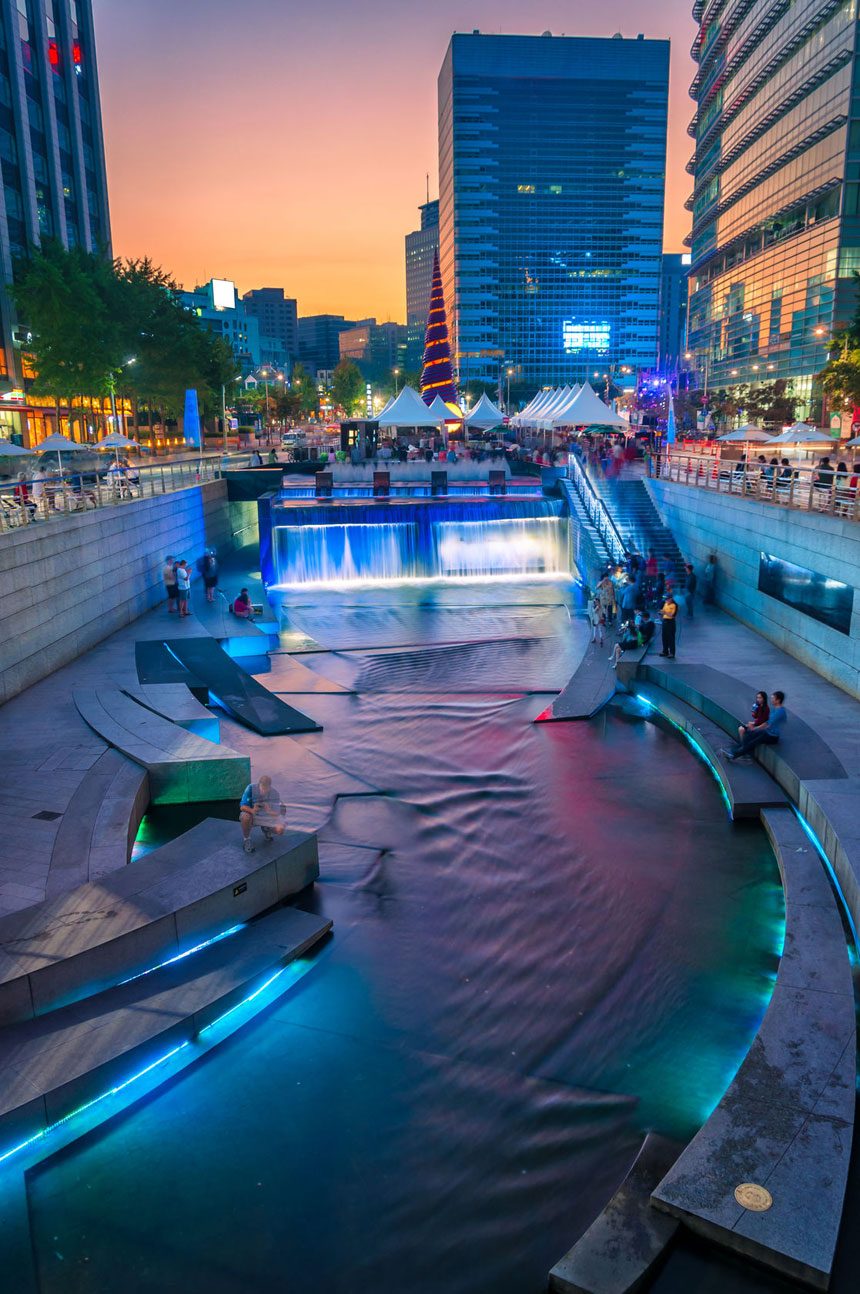
What
Cheonggyecheon Stream is a beautiful, urban stream that winds its way through the heart of Seoul. But this beauty is not always as stunning as it is today. The stream once was like an abandoned sleeping princess, obscured by an overpass. After the restoration efforts of the government in 2005, the stream has woken up and lived happily as a modern recreational space.
This 11-kilometre little river runs below street level. It flows under 22 bridges and close to many major landmarks before meeting Jungnangcheon stream and vanishing into the Yellow Sea.
Why
Cheonggyecheon Stream provides an unexpectedly quiet and serene atmosphere despite its location amid a busy city. It is bounded by walkways on both sides, making it perfect for a leisurely stroll or rest after shopping.
The whole stream is dotted with fountains and waterfalls that add a more refreshing touch to the place. Live shows and concerts are regularly conducted at some points of the waterway. Stay on after sunset and watch the stream come alive with wonderful lights and colored illumination from the streets above.
Points of interest along Cheonggyecheon Stream
Cheonggye Plaza, located at the starting point of Cheonggyecheon Stream, is one of the places to check out. It features a scale model of the entire stream and plaques that provide detailed information about the bridges of Cheonggyecheon. You can make a wish at Palseokdam wishing wells and witness the dazzling light and water show there in the evening.
History buffs may take pleasure in visiting the Cheonggyecheon Museum. Your eyes will be delighted by watching the glass exterior of the museum, which is designed in a way that imitates the flowing waters of the stream. If you want to know how Seoul was before the beautification of Cheonggyecheon Stream, enter the permanent exhibition hall to learn from the visual representations.
The stream is fascinating with its decorative walls. The ceramic wall painting Banchado tells an interesting story about the visit of King Jeongjo to his father tomb. The Rhythm Wall Stream is decorated with images of fish that seems to swim upstream. Just walk along the stream’s walkways to explore more stories on its walls.
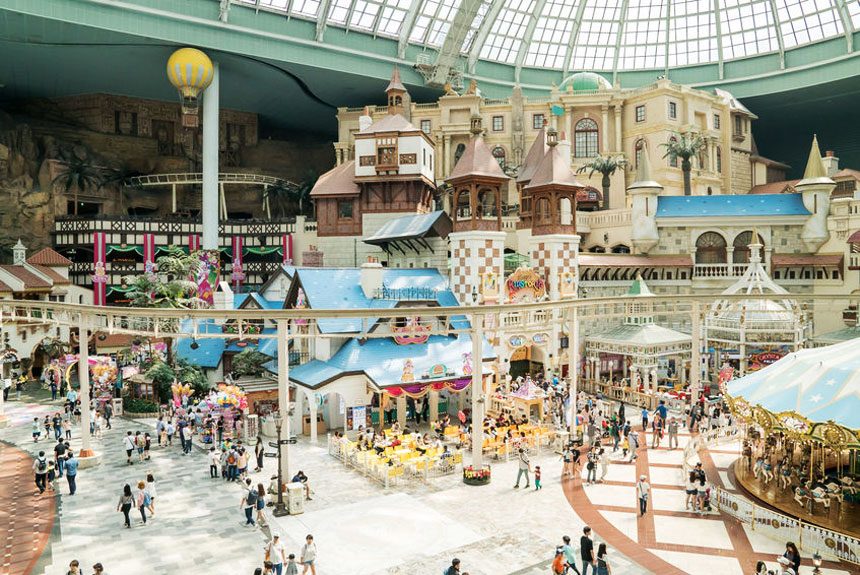 Image credit: mezairi
Image credit: mezairi What
Lotte World is the first theme park in Korea, attracting an average of 8 million guests annually.
The theme park is designed to have two main zones. Recognized as the world’s largest indoor theme park by the Guinness Book of World Records, Indoor Adventure lures fun seekers with its 22 amazing rides. Sit on a man-made Island in the middle of Seokchon Lake, Magic Island is home to 17 outdoor rides that will surely pump up your adrenaline.
Why
The best part of Lotte World is that most of its space is indoors so you don’t have to worry about the rain or the heat from the sun.
This fun centre offers enjoyable activities for people of all ages. Children can drive the bump cars. Teenagers can fly on the roller coaster. Lovers can float around on the swan boats. Whole families can enjoy a lake cruise.
Besides theme park, Lotte World also features a museum, a shopping mall, a department store, a luxury hotel, and a movie theater. It is convenient to spend a night at the hotel, and enjoy a day having fun at the park and shopping at the mall.
Lotte World highlights
The Gyro series of rides is the centerpiece of extreme adventure in Lotte World. Free fall on the Gyro Drop from a height of 70 metres at a speed of 100 kilometres per hour. Swing around on the giant Gyro Swing and go back and forth like a pendulum with feet hanging in the air. Go more extreme and hop on the Gyro Spin where you swing and spin around on giant saucer-like discs. Are you dizzy yet?
Admission to Lotte World comes with free entrance to the Lotte World Folk Museum. Learn about Korea’s rich history and admire the scale model of a Korean village and palace. Wander into Imjinwaeran Hall and witness early Korean battles through Magic Vision.
The Lotte World Ice Rink is naturally illuminated through the glass-domed ceiling. For a moment, you will forget that you are indoors as you glide through the ice amid the screams of thrill seekers from the nearby rides.